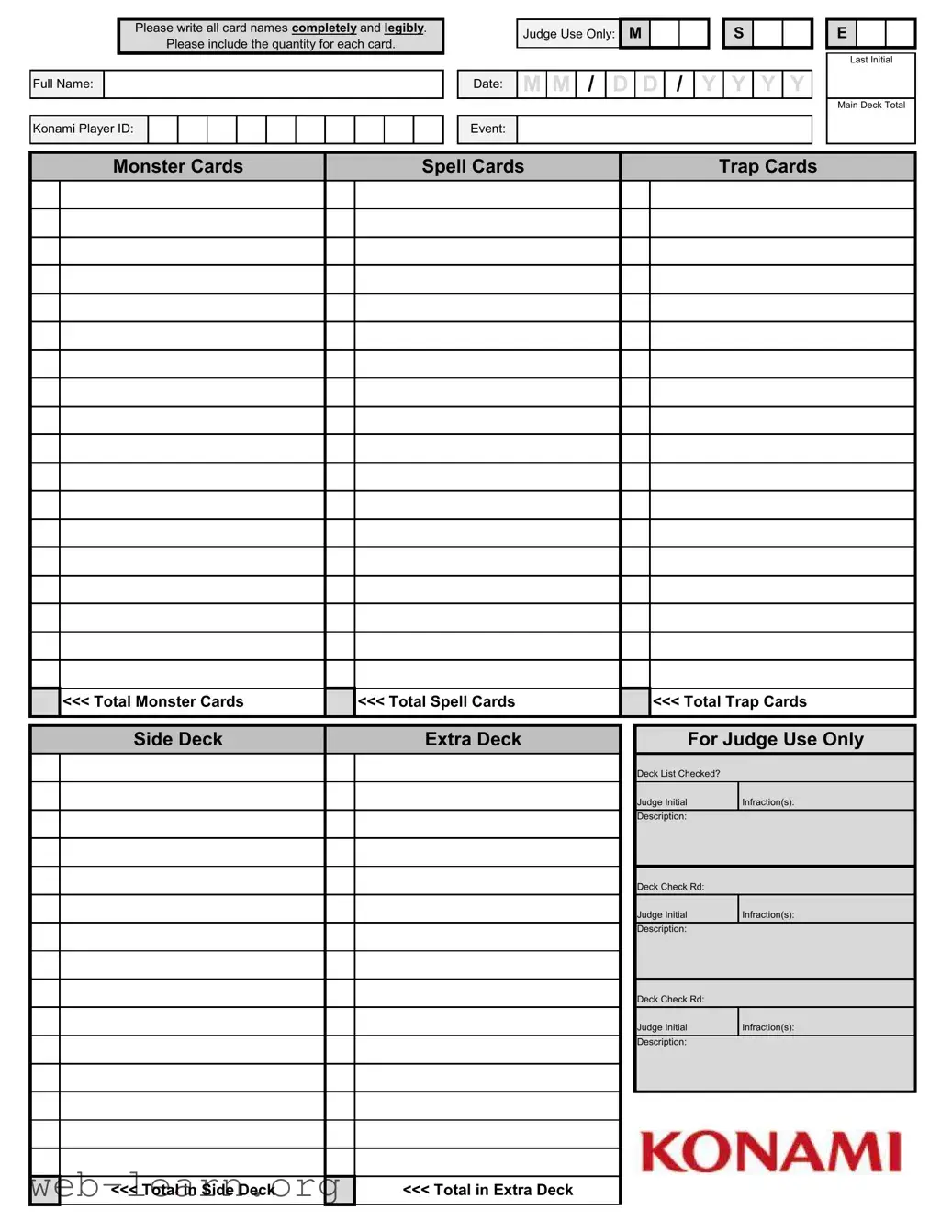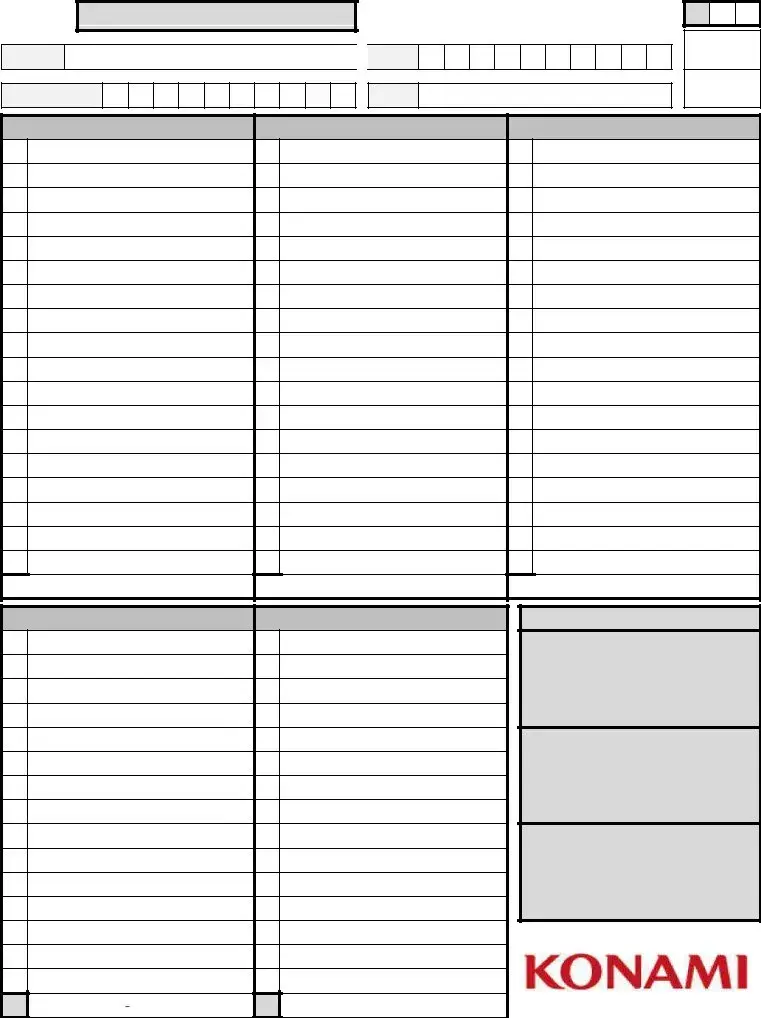When filling out the Konami Decklist form, players often overlook several critical details that can lead to issues during the event. One common mistake is neglecting to write down all card names completely and legibly. Abbreviations or incomplete names can cause confusion, leading to potential disqualifications.
Another frequent error involves not including the quantity for each card. It's essential to specify how many of each card you have in your deck. Without this information, the judges may not accurately assess your deck, which could result in complications down the line.
Players also sometimes skip providing their full name or Konami Player ID. This information is vital for identification purposes and ensures that records are correctly maintained. A missing name or ID can hinder the processing of your entry.
Many individuals forget to update the date on the form. The format—M M / D D / Y Y Y Y—must be followed precisely. An incorrect date can raise questions about the validity of your entry, leading to unnecessary issues.
Forgetting to check the total counts for the Main Deck, Side Deck, and Extra Deck is another common oversight. Each section requires careful attention to ensure the totals add up correctly. An incorrect total may require a re-evaluation of your deck.
Players often do not use the sections for Judge Use Only properly. When judges need to document infractions or observations, clarity is crucial. Failing to leave ample space or not following instructions can create problems during the checks.
Including multiple infractions or descriptions in a single section can also confuse judges. They prefer clear and concise notes for each infraction. Keeping each entry separate makes it easier for them to assess and address issues.
Finally, some participants neglect to review their Decklist before submission. A last-minute check can catch many small errors that could lead to significant issues. Taking that extra moment can help ensure a smooth process and a positive event experience.




 <<< Total Monster Cards
<<< Total Monster Cards <<< Total Spell Cards
<<< Total Spell Cards <<< Total Trap Cards
<<< Total Trap Cards